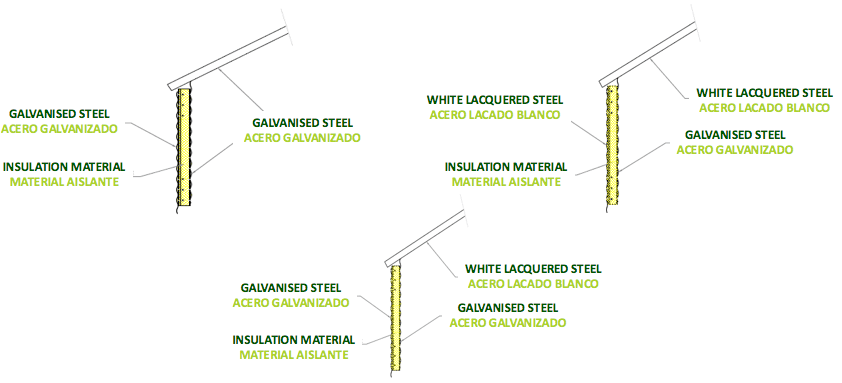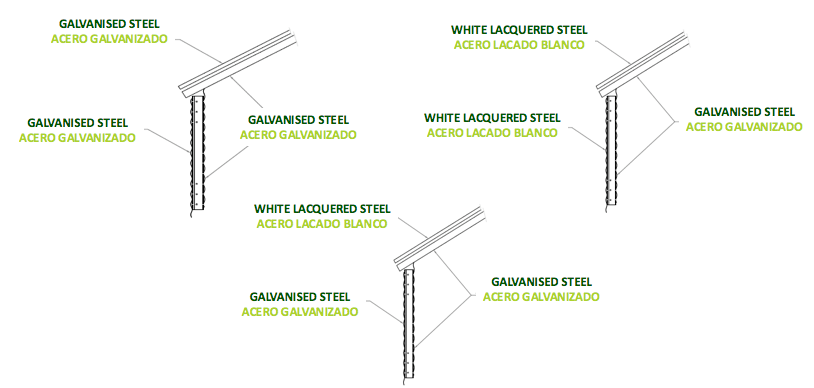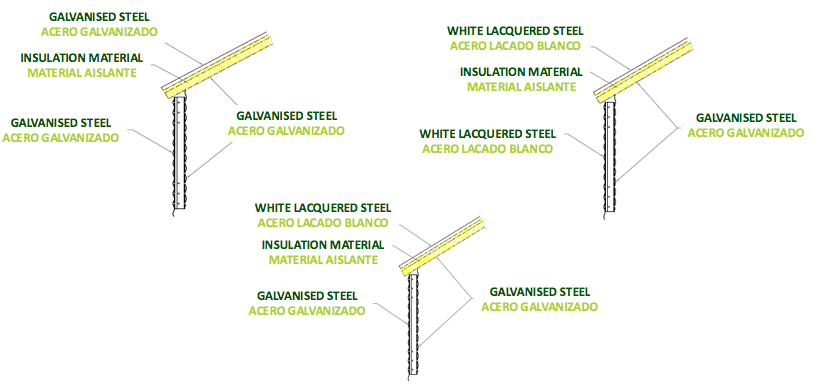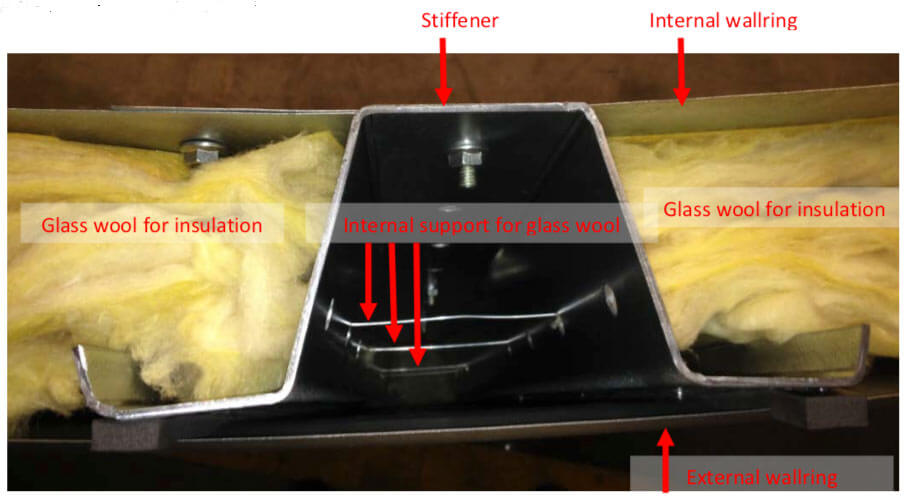Ventilation and grain cooling, although both very safe methods for keeping the highest quality of the grain, could be insufficient for maintaining the appropriate temperature conditions inside the silo because of the sun radiation.
Climate conditions should be analysed before deciding which silo insulation system to install. In hot climates and depending on the grain owner’s needs it could be necessary to consider silo insulation. Regarding a steel silo, three parts can be insulated: roof, wallrings (cylinder) and cone (in case hopper silos).
It is also convenient to know what measures can be taken to minimize grain deterioration in storage.
HOW TO MINIMIZE GRAIN DETERIORATION
Grain spoilage is an irreversible and inevitable process, but it can be delayed by taking the necessary measures.
The three main factors affecting grain storage (pulses, cereals, oil seeds) are moisture content, temperature, and storage duration.
A special focus on these three factors will certainly assure perfect storage conditions. We will focus on the factors related to temperature in order to take appropriate measures to preserve the grain’s quality:
Temperature is very important factor influencing in grain storage. Growth of fungi and chemical changes such as oxidation are increased with temperature. Moreover, it is really important to consider the climate in the different regions of the world. Experience indicates that under hot and humid tropical conditions, grains stored in metal bins exhibit sweating. This problem arises with extreme high temperatures reached on the inner surface of the metal silo on a hot day, then, at night, the rapid cooling of the metal results in moisture condensation as the dew point is reached.
Caking and charring in metal silos can be attributed to this phenomenon. Installing suitable ventilation, cooling and insulation systems help maintain the required temperature, thus avoiding these problems.
Those are some indicators that will help us to detect any possible problem with the products stored in silos:
Heating. Heating is the most common indicator of a problem in stored grains. High grain temperatures normally indicate either microbial or insect activity. If left unchecked, this may lead to heat-damaged or charred grains due to the phenomenon of stack burning.
Because of this danger, hot spots must be cooled or dissipated before they reach the critical level. If no action is taken when heating on grains occurs, either the product will be lost by stack burning (charring) or at worst, the entire facility will be lost through fire.
Aerating grains when fire has already started makes the situation worse. A temperature monitoring system in storage silos is essential. The importance of immediate corrective measures to prevent heating cannot be over-emphasized.
Change in colour and general appearance. Discoloured grains usually indicate inferior quality and lower market value. The change in colour is usually associated with mould invasion accompanied by microbial respiration and subsequent heating. This deterioration process can be detected by periodic drawing of samples from the stored grain as part of an integrated approach to quality maintenance.
Once detected, appropriate measures can then be taken such as cooling the grain either by aeration or by using a portable cooling unit. Another corrective measure is to transfer the grain to another silo, thus breaking any hot spots present and cooling the grains during the conveying process.
However, this should be done only as a last resort since it is costly and will increase the percentage of broken or split grains.
Mustiness and off-odour condition. Musty odour usually indicates an advanced stage of insect or mould infestation and should be dealt with immediately.
If this is detected, grain should be aerated to remove the bad odour and cool the material. Grain should then be used at the earliest opportunity. The grain should be fumigated immediately if insects are present. A sharp odour may indicate rancidity due to chemical changes in the oil component.
Lumping and caking. Lumping and caking indicate a very advanced stage of fungi invasion in grains.
In metal bins, caking usually occurs on the bin walls as a result of sweating or moisture condensing on the inner surface of the cold bin wall. The condensed moisture is absorbed by the adjacent grains resulting in either sprouting or mould growth.
SILO INSULATION SYSTEMS
If a silo isolation system is necessary, it is convenient to analyse the different systems that exist before deciding which one best suits the needs of the grain or of each particular client:
- Single sheet in roof, wall ring and cone. Spray coating/ceramic paint. Steel silo is coated with a reflective coating to avoid sun radiation and thus, reduce heat absorption.

- Double sheet in wall ring. It can be installed in wall rings or cones (in the case of hopper silos).

- Double sheet in wall ring + insulation material. Double sheet with an inner insulation material. Polyurethane foam, rock wool or glass wool are the most commonly used material.

- Single sheet + Double roof. Combination of the first system and double sheet in roof.

- Single sheet + Double roof + Insulation material. Combination of the first system and double sheet in roof with interior insulation material.

- Double sheet + Double roof. Combination of the second and fourth system.

- Double sheet + Double roof with insulating material. Sixth system including interior insulation material only on roof.

- Double sheet with insulating material + Double roof with insulating material. Sixth system including interior insulation material in cylinder and roof.

- Double sheet in cone. Enclosure attached to the legs of hopper silos to reduce heat absorption.

Download pdf file: Silo insulation systems








